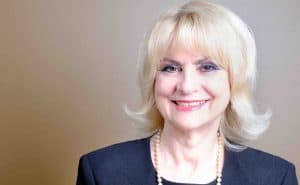Sharon’s journey with cataract surgery – Post #2
Sh aron Groves
aron Groves
American Retirement Advisors,
Practicing Healthcare Professional
My visit on July 11th was almost 2 hours long because not only do I have to have cataract surgery in both eyes, they also have to correct astigmatism in both eyes. Astigmatism is a treatable imperfection in the curvature of the eye. Unlike my first visit to the ophthalmologist, I did NOT need to have my eyes dilated for this visit.
First, I met with the doctor’s associate to obtain my medical history. The information requested included what medications I am currently taking, any operations or blood transfusions I may have had in the past, what types of vitamins I take, dates of any hospitalizations and reasons for such, and was I allergic to anything? They also documented my current weight and blood pressure.
Next, I met with a nurse who was going to “map” and “measure” each eye. This is necessary to assess the correct type of lens needed in each eye. This is totally covered by my Medicare Supplement Plan F. However, since I have astigmatism in each eye, they needed to do a Corneal Topography in each eye. This test is NOT covered by Medicare and would cost me $90 per eye.
The first step is to take six pictures of each eye. You look in a machine and focus on a blinking red light. The associate tells you to “blink a few times,” then “don’t blink and don’t move!” In two seconds, a white light goes off. It is not a blinding white light, it just happens. She then reviews the results and, if necessary, may take more pictures in order to obtain an accurate reading.
The next step was another machine which “mapped” and “measured” each cornea. The cornea should be round and dome-shaped so that the light passing through it would give you accurate vision. Both of my corneas will need incisions in precise locations so that my corneas can resume their round, dome shape.
Lastly, I met with a counselor who showed me a video of the cataract surgery. She also reviewed certain documents with me and asked me if I had any questions about this entire procedure.
Next week, I will meet with the surgeon and anesthesiologist. They will review the results from today and discuss it in detail with me, prior to surgery.
The entire staff was professional and patient; I didn’t feel rushed at all. I am still apprehensive, but with a complete understanding of the procedure each step of the way, I am confident in my team.
